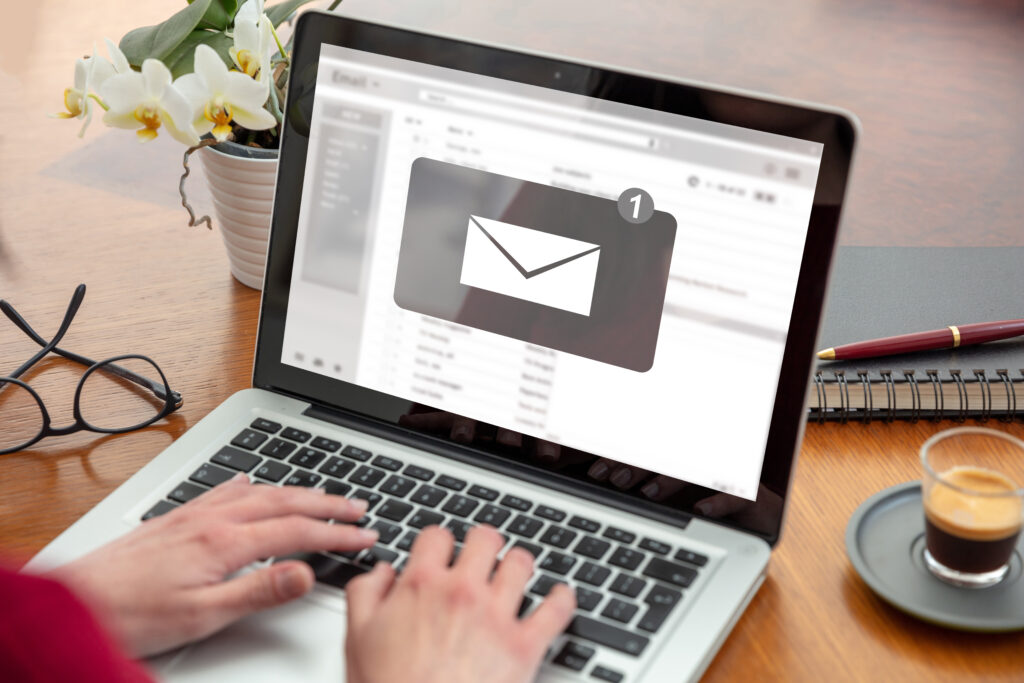Standing Out in the Inbox: Tips for Effective Email Marketing
When it comes to email marketing, standing out in the inbox can be a challenge.
With an abundance of emails arriving each day, it can be difficult to ensure that your message is seen and acted upon by your target audience. Thankfully, there are some key practices you can implement to ensure that your email marketing stands out from the crowd and effectively reaches your intended recipients.
In this blog post, we’ll discuss the best practices for business owners looking to maximize their email marketing efforts and stand out in the inbox. So read on!
Understanding Email Marketing

Email marketing is a powerful tool for businesses to engage with their target audience and promote their products or services. This form of marketing allows you to connect with customers on a more personal level, delivering tailored content directly to their inbox.
But what exactly is email marketing? Simply put, it is the act of sending promotional messages or newsletters to a list of subscribers who have opted in to receive them. These emails can range from promotional sales announcements to informative content, all designed to drive traffic and conversions to your website.
One of the biggest advantages of email marketing is its high ROI potential. According to Campaign Monitor, for every $1 spent on email marketing, businesses can expect an average return of $44.25. Additionally, email marketing allows for direct communication with customers, which can foster brand loyalty and strengthen customer relationships.
To get started with email marketing, it’s important to have a clear understanding of your target audience and what type of content they would be interested in receiving. This means developing buyer personas and segmenting your email list accordingly.
It’s also crucial to ensure that your email list is made up of subscribers who have opted in to receive your emails. This helps prevent your emails from being marked as spam and helps to improve your email deliverability rate.
Overall, understanding the basics of email marketing and the potential benefits it can bring to your business is key to crafting an effective email marketing strategy.
Building a Quality Email List

One of the most crucial steps in effective email marketing is building a quality email list.
Your email list should be made up of individuals who have opted-in to receive communications from your business. It’s important to avoid purchasing or renting email lists, as these individuals have not expressed interest in your business and are more likely to mark your emails as spam.
So, how do you build a quality email list? Start by collecting email addresses through your website’s sign-up form or in-person at events and conferences. You can also offer an incentive, such as a discount code or exclusive content, for individuals who sign up for your email list.
Another important factor in building a quality email list is maintaining your subscribers’ trust. Make it clear what type of content subscribers can expect from your emails, how often they will receive them, and provide an easy way to opt-out at any time. Additionally, avoid sending emails too frequently or bombarding subscribers with irrelevant content.
By building a quality email list, you’ll ensure that your emails are reaching individuals who are interested in your business, increasing the likelihood of conversions and fostering positive relationships with your audience.
Crafting Attention-Grabbing Subject Lines

The subject line is the first thing your recipients see in their inbox, and it can make or break the success of your email campaign. If your subject line doesn’t grab their attention, they’ll likely hit the delete button or send your email to the spam folder.
So, how do you craft an attention-grabbing subject line that entices your readers to open your email?
Here are some tips:
- Keep it Short and Sweet. Your subject line should be no more than 50 characters, so it doesn’t get cut off in the recipient’s inbox. Keep it concise and to the point. Adding the recipient’s name or using other personalized information in the subject line can increase open rates. Make sure the information is accurate and relevant.
- Be Clear and Specific. Your subject line should clearly state what your email is about. Vague or misleading subject lines can hurt your open rates and damage your credibility.
- Create Urgency. Use language that creates a sense of urgency, such as “Limited Time Offer” or “Don’t Miss Out”. This can motivate recipients to take action quickly.
- Use Emojis. Emojis can add a fun and playful element to your subject line, but use them sparingly and only if they are appropriate for your brand.
Crafting an attention-grabbing subject line takes time and effort, but it’s worth it. Experiment with different techniques, and analyze your results to see what works best for your audience. Remember, your subject line is your first impression, so make it count!
Writing Compelling Email Copy

Once you’ve captured the attention of your audience with an attention-grabbing subject line, it’s time to reel them in with compelling email copy.
Here are a few tips for creating effective email content:
- Keep it concise. People have short attention spans and don’t want to read a lengthy email. Keep your message short, sweet, and to the point.
- Focus on benefits, not features. Instead of listing features or services, highlight the benefits that your product or service offers. How will it solve your subscribers’ problems or make their lives better?
- Write in the second person. Address your subscribers as “you” and use language that is conversational and easy to understand. Avoid using jargon or technical terms.
- Personalize your message. Use your subscriber’s name or other personal information to make the email feel more tailored to them.
- Use a clear and persuasive call-to-action. Tell your subscribers exactly what you want them to do, whether it’s clicking a link, filling out a form, or making a purchase.
- Keep testing and refining. Use analytics to see what is resonating with your subscribers and adjust your messaging accordingly. Keep testing different copy and subject lines to see what works best.
By following these tips, you can create email content that not only captures the attention of your subscribers but also inspires action and drives conversions.
Including Clear Call-to-Actions

You’ve captured your reader’s attention with an attention-grabbing subject line and well-crafted email copy, but what do you want them to do next? This is where a clear call-to-action (CTA) comes in.
A CTA is a statement or button that tells the reader what action you want them to take, whether it’s to sign up for a free trial, register for an event, or make a purchase.
Here are some tips for creating effective CTAs:
- Make it clear. Use simple language that clearly tells the reader what action to take. Don’t leave room for confusion or misinterpretation.
- Create urgency. Use words like “limited time offer” or “act now” to create a sense of urgency and encourage immediate action.
- Use contrasting colors. Make your CTA stand out by using a contrasting color that catches the reader’s eye.
- Place it strategically. Your CTA should be prominently displayed and easily visible. Place it above the fold (the area of the email that is visible without scrolling) and use whitespace to make it stand out.
- Test and analyze. Test different CTAs to see what works best for your audience. Use analytics to track clicks and conversions and adjust your strategy accordingly.
Remember, the ultimate goal of your email marketing campaign is to get readers to take action. A clear and compelling CTA can make all the difference in achieving that goal.
Timing and Frequency

Another important aspect to consider when it comes to effective email marketing is the timing and frequency of your emails.
Sending too many emails or sending them at the wrong time can quickly turn your subscribers off and lead them to unsubscribe from your list. On the other hand, sending too few emails may result in your subscribers forgetting about your business altogether.
One of the best ways to determine the best time to send your emails is to test different sending times and see which ones result in the highest open and click-through rates. However, some general guidelines can help you get started.
For instance, it’s generally best to avoid sending emails during weekends or holidays when people are more likely to be busy with other things. Instead, consider sending emails during the weekdays, particularly during the early mornings or late afternoons when people are more likely to have time to read their emails.
In terms of frequency, there is no one-size-fits-all answer. It really depends on your audience and the type of content you’re sharing. However, as a general rule of thumb, it’s a good idea to avoid bombarding your subscribers with emails on a daily basis. Instead, consider sending weekly or bi-weekly emails, and adjust the frequency based on how your subscribers respond.
Ultimately, the key to getting your timing and frequency right is to pay close attention to your subscribers’ behaviors and preferences, and to always be testing and refining your email marketing strategy based on your findings. By doing so, you can ensure that your emails are not only reaching your subscribers’ inboxes, but also capturing their attention and driving conversions.
Testing and Analytics

One of the most important steps in any email marketing campaign is testing and analytics. Testing different elements of your emails and analyzing the results can help you improve the effectiveness of your campaigns over time.
Some things you may want to test include your subject lines, the timing and frequency of your emails, the content of your emails, and the placement of your call-to-actions. You can use split testing, or A/B testing, to send different versions of your emails to a small portion of your email list and track which version performs better. This can help you make informed decisions about what changes to make to your emails going forward.
It’s also important to analyze the data you gather from your email campaigns. Look at metrics such as open rates, click-through rates, and conversion rates to get a sense of how your campaigns are performing. This data can help you identify areas for improvement and refine your email marketing strategy.
Remember, email marketing is not a one-time event, it’s an ongoing process. By testing and analyzing your campaigns, you can continue to improve and refine your approach, and ultimately, get better results.
Ready to sell your property? Give us a call today and learn more about our professional photography services and marketing that can boost your property listing!
Plus, explore our virtual assistant coaching program to level up your business. Don’t forget to tune into our new podcast for even more valuable insights!
